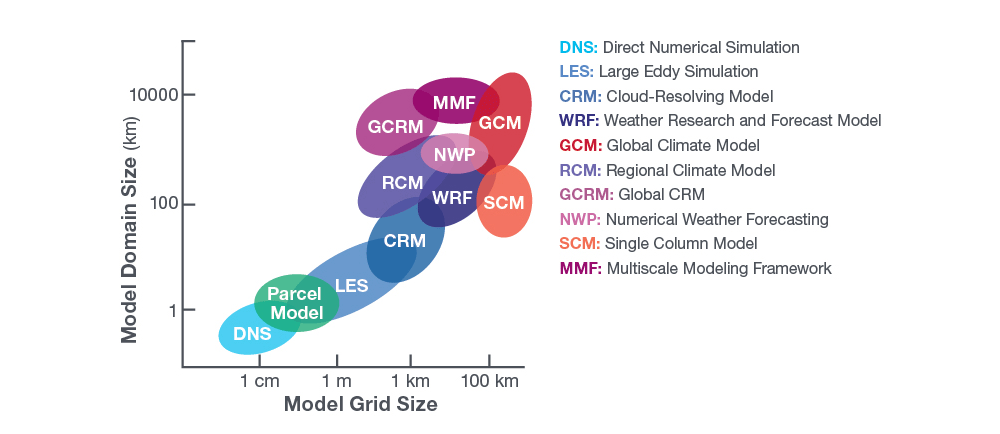Cloud Processes and Measurement
The Cloud Processes and Measurement Group investigates clouds and the processes that affect them and that they affect, and how to represent these processes in models over the range of relevant scales.
The Earth’s atmosphere is shaped by many physical processes taking place across a wide range of time and space scales — from tiny cloud droplets forming in milliseconds to continental-sized weather systems that last for weeks. Our team studies these processes using a combination of detailed real-world observations and computer models. We focus on how clouds form, how they produce precipitation, how the land and atmosphere interact, and how cities affect the surrounding environment. We improve how these processes are represented in numerical models and study their effects on the regional and global atmosphere, helping to understand weather and transport processes. To support this work, we also design and participate in field campaigns and develop new tools—including instruments, techniques, and models—to advance the collection, analysis, and application of the data we gather.

Illustration of various models used to address multiscale challenges of Earth's atmospheric system.
Research Goals
Our group studies the small-scale physical and dynamic processes — like entrainment (how surrounding air mixes into clouds) — that shape how clouds and precipitation form, grow, and disappear. By improving how these details are represented in computer models, we can enhance our ability to understand and predict impactful atmospheric processes, both in the short term and over longer timescales. We also apply our research to practical challenges, such as forecasting for energy resources and assessing how storms impact power outages. This helps improve the resilience of our energy grid and speeds up recovery after extreme weather events.
We work to better understand how clouds behave by combining real-world observations with theory and computer models, focusing on the parts of the atmosphere we still don’t fully understand. Our team develops innovative ways to analyze data from multiple instruments—especially advanced radar systems that can measure cloud and rain properties in great detail. We also use cutting-edge computational tools, including signal processing, machine learning (ML), artificial intelligence (AI), and high-speed computing with graphics processors, to make sense of large and complex datasets.
Capabilities
- Designing field campaigns to target processes essential to understanding clouds and precipitation
- Advanced radar detection and retrieval techniques, especially those using cloud radar Doppler spectra
- Developing parameterizations for important processes such as precipitation onset and rain rate
- Measuring and modeling deep convection and entrainment
- Retrievals of mixed-phase cloud properties
- Development of advanced data products describing cloud and thermodynamic properties from multiple instruments
- Numerical modeling of clouds, turbulence, and other atmospheric processes across a range of temporal and spatial scales
-

Michael Jensen
Interim Department Chair
Environmental Science and Technologies Department
(631) 344-7021, mjensen@bnl.gov




